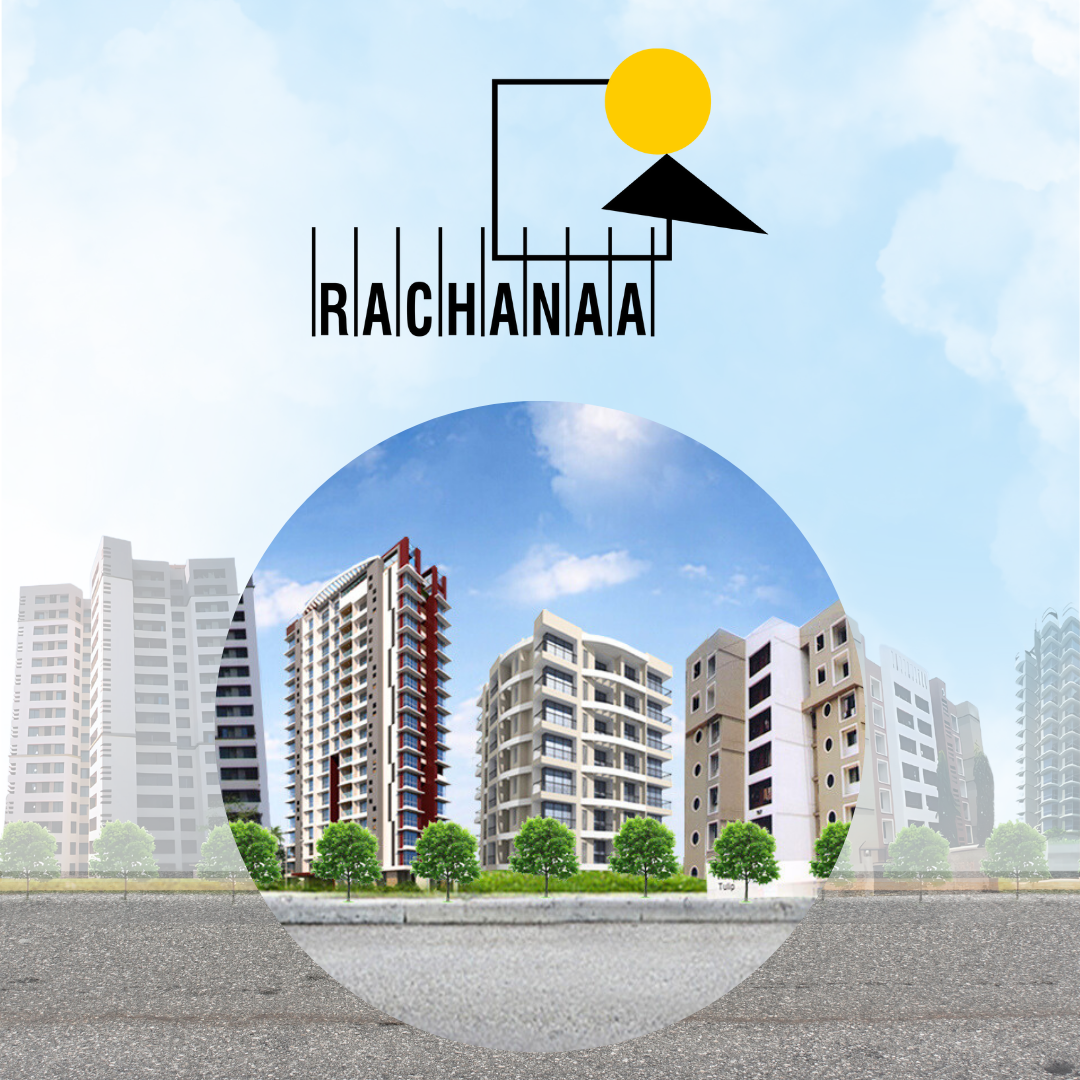Property Loans with Rachanaa Group
All Rachanaa Group projects’ legal titles, as well as relevant permissions, are always clear, which enables all leading Housing Finance Institutions (HFIs) to process loans smoothly. The loan processing becomes easier and faster because Rachanaa executives are constantly in liaison with HFIs to smoothen the entire interaction. Rachanaa offers guidance to all loan-seeking Resident Indians or Non-Resident Indians to choose the best possible loan available from a range of HFIs.
Generalized guidelines for both Resident Indians and Non-Resident Indians (NRIs) vis-a-vis housing loans in Mumbai:
The types of home loans available:
- Home Purchase Loans: This is the basic home loan for the purchase of a new home.
- Home Improvement Loans: These loans are given for implementing repair works and renovations in a home that has already been purchased by you.
- Home Construction Loans: This loan is available for the construction of a new home.
- Home Extension Loans: This is given for expanding or extending an existing home. For example addition of an extra room etc.
- Home Conversion Loans: This is available for those who have financed the present home with a home loan and wish to purchase and move to another home for which some extra funds are required. Through a home conversion loan, the existing loan is transferred to the new home, including the extra amount required, eliminating the need for pre-payment of the previous loan.
- Bridge Loans: Bridge Loans are designed for people who wish to sell their existing home and purchase another. Bridge loans help finance the new home until a buyer is found for the old one
- Balance Transfer Loans: Balance transfer loans help you to pay off an existing home loan and avail the option of a loan with a lower rate of interest.
- Refinance Loans: This loan helps you pay off the debt you have incurred from private sources, such as relatives and friends, for the purchase of your present home.
- Stamp Duty Loans: This loan is sanctioned to pay the stamp duty amount that needs to be paid on the purchase of property.
Loans to NRIs: This is tailored to the requirements of NRIs who wish to build or buy a home in India.
Some of the incentives offered by lending institutions are:
Some companies sanction the loan without requiring you to identify the property as a prerequisite for eligibility.
- Free accident insurance.
- Discounts
- Waiving of pre-payment penalty
- Waiving of processing fee
- Free property insurance
Time frame to get an application processed and the loan sanctioned.
It takes around fifteen days to process one’s application if the documents are in order. It takes another week for the company to check out the property papers and make the disbursement.
Amount of Loan
Home loans are generally provided for in the range of 75%-85% of the asset value. The amount of the loan varies from institution to institution, and it may vary from Rs. 1 lakh to Rs. 1 crore. The maximum amount that one can borrow is a function of many factors, which include primarily the purpose of the loan. In addition, one’s residential status, whether resident in India or non-resident, will also have a bearing on the maximum amount of loan that one can borrow. Generally, if one is a resident Indian, then he can borrow up to 85% of the cost of the property.
Loan Eligibility
The primary concern of the HFC in determining loan eligibility is that you are comfortably able to repay the amount you borrow. Your repayment capacity is determined by taking into consideration factors such as income, age, qualifications, number of dependents, spouse’s income, assets, liabilities, stability and continuity of occupation, and savings history.
Repayment Period Options
Repayment period options generally range from 5 to 15 years. A few HFCs also offer a 20-year repayment period, usually at a higher interest rate.
The Basis of Interest Rate Calculations
The interest on home loans in India is usually calculated either on a monthly or yearly reducing balance. Monthly reduction: In this system, the principal on which you pay interest reduces every month as you pay your EMI.
Annual Reducing: In this system the principal is reduced at the end of the year; thus, you continue to pay interest on a certain portion of the principal that you have paid back to the lender. This means that the EMI for the monthly reducing system is effectively less than the second system of calculating interest.
EMI
EMI or Equated Monthly Installments, refers to the fixed sum of money that you will be paying to the housing finance company every month. The EMI comprises both interest and principal repayment. The size of the EMI depends on the quantum of the loan, the applicable interest rate, and the term of the loan. A comparative study of EMI per lakh of rupees for a 15-year tenure of a loan is a must for any borrower before accepting any loan.
Security to be provided for the Loan
Security for the loan is a first mortgage of the property to be financed, normally by way of deposit of title deeds. The title should be clear and marketable. Some HFCs may also require collateral security like the assignment of life insurance policies, pledge of shares, NSCs, units of mutual funds, bank deposits, or other investments.
Documents Required at the Time of Application
The common documents that the financiers require at the pre-approval stage are
- Proof of Age
- A copy of bank A/C statements for the last 6 months.
- Copy of the latest credit card statement
- Passport-size photograph
- Signature verification from your banker.
If you are salaried, you need to produce: - Salary and TDS certificate,
- Latest pay slip
- Letter from employer.
If you are self-employed, you require: - Your business track record
- Copy of audited financial statements for the last 2 years
At the disbursal stage (for property already located), you need to submit:
- Allotment letters
- Photocopies of title deeds
- Agreement to sell
- Encumbrance certificate
For self-construction:
- Approved plans and clearance certificates along with estimates
Co-Applicant
Co-applicants are the co-owners of the property in respect of whom the financial assistance has been sought. Usually joint applications are from husband-wife, father-son, or mother-son.
Property Loans with Rachanaa Group
All Rachanaa Group  projects’ legal titles, as well as relevant permissions, are always clear, which enables all leading Housing Finance Institutions (HFIs) to process loans smoothly. The loan processing becomes easier and faster because Rachanaa executives are constantly in liaison with HFIs to smoothen the entire interaction. Rachanaa offers guidance to all loan-seeking Resident Indians or Non-Resident Indians to choose the best possible loan available from a range of HFIs.
Generalized guidelines for both Resident Indians and Non-Resident Indians (NRIs) vis-a-vis housing loans in Mumbai:
The types of home loans available:
- Home Purchase Loans:
- This is the basic home loan for the purchase of a new home.
- Home Improvement Loans:
- These loans are given for implementing repair works and renovations in a home that has already been purchased by you.
- Home Construction Loans:
- This loan is available for the construction of a new home.
- Home Extension Loans:
- This is given for expanding or extending an existing home. For example addition of an extra room etc.
- Home Conversion Loans:
- This is available for those who have financed the present home with a home loan and wish to purchase and move to another home for which some extra funds are required. Through a home conversion loan, the existing loan is transferred to the new home, including the extra amount required, eliminating the need for pre-payment of the previous loan.
- Bridge Loans:
- Bridge Loans are designed for people who wish to sell their existing home and purchase another. The bridge loans help finance the new home until a buyer is found for the old home.
- Balance Transfer Loans:
- Balance transfer loans help you to pay off an existing home loan and avail the option of a loan with a lower rate of interest.
- Refinance Loans:
- This loan helps you pay off the debt you have incurred from private sources, such as relatives and friends, for the purchase of your present home.
- Stamp Duty Loans:
- This loan is sanctioned to pay the stamp duty amount that needs to be paid on the purchase of property.
- Loans to NRIs:
- This is tailored to the requirements of NRIs who wish to build or buy a home in India. Some of the incentives offered by lending institutions are :
- Some companies sanction the loan without requiring you to identify the property as a prerequisite for eligibility.
- Free accident insurance.
- Discounts
- Waiving of pre-payment penalty
- Waiving of processing fee
- Free property insurance
Time frame to get an application processed and the loan getting sanctioned.
Amount of Loan
Loan Eligibility
Repayment Period Options
The Basis of Interest Rates Calculation
EMI
Security to be Provided for the Loan
Documents Required at the Time of Application
a) Proof of Age
b) Copy of Bank A/C statements for the last 6 months
c) Copy of latest credit card statement
d) Passport size photograph
e) Signature verification from your banker
If you are salaried, you need to produce:
f) Salary and TDS certificate
g) Latest pay slip
h) Letter from employer
If you are self-employed you require:
i) Your business track record
j) Copy of audited financial statements for the last 2 years
At the disbursal stage (for property already located), you need to submit:
a) Allotment letters
b) Photocopies of title deeds
c) Agreement to sell
d) Encumbrance certificate
For self-construction:
a) Approved plans and clearance certificates along with estimates






